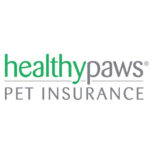Best Pet Insurance For Whippets In 2025
In my view, Healthy Paws is the ideal provider of pet insurance specifically designed for Whippets.
We’ve saved shoppers an average of $350 per year on their pet insurance.
Startlingly, 80% of pet owners are not financially equipped to handle a surprise $500 vet bill. This is where pet insurance plays a critical role, acting as a financial safety net.
In this overview, we’ll examine the top pet insurance companies for Whippets, helping you pick the one that best suits your needs. Like human health insurance, pet coverage provides more care choices and controls costs.
Best Pet Insurance Companies For Whippets, 2025
Many pet insurance companies that focus on Whippets prioritize your pet's health and provide financial assistance, although they differ in their offerings. What works for one pet may not suit another. Here are some of the best pet insurance options for Whippets:



Compare The Best Pet Insurance Companies For Whippets
From our evaluation of the best pet insurance choices for Whippets discussed earlier, it's evident that several reputable companies are competing for the top spots. Each company also has its own unique strengths. Here's a quick overview to give you a sneak peek into each insurer.
| Overall Rating | Best For | Waiting Period | Reimbursement % | Benefit Limit | Get A Quote | |
|---|---|---|---|---|---|---|
| Healthy Paws |
|
Overall |
15 days accident/illness |
70%, 80%, 90% |
Unlimited annual and lifetime |
Instant Quote |
| Lemonade |
|
Cheap |
2 days accident, 14 days illness |
70%, 80%, 90% |
$5,000 to $100,000 annually |
Instant Quote |
| Many Pets |
|
Puppies |
15 days accident/illness |
70% or 80% (Most States) |
Unlimited annual and lifetime |
Instant Quote |
| Pumpkin |
|
Older D0gs |
14 days accident/illness |
90% |
$10,000 , $20,000 or unlimited |
Instant Quote |
| Spot |
|
Multiple Pets |
14 days accident/illness |
70%, 80%, 90% |
$2,500 to unlimited |
Instant Quote |
Our Methodology
Our ratings were based on a thorough review of insurer websites, customer feedback analysis, consulting various review platforms, and personal experiences with pet insurance.
Quotes Analyzed
Years Of Industry Experience
Brands Reviewed
Research Hours
Detailed Reviews Of The Best Whippet Insurance Companies
Best Overall
Key Statistics
Why We Like Them
⇅Healthy Paws is a standout choice for pet insurance, offering no cap on payouts, per-incident limits, or restrictions. Though the cost might be higher, it eliminates the need for difficult choices based on policy constraints. The policy is simple, without costly extras, and allows for visits to any licensed vet. Claims are easy to file using their mobile app or website, with most resolved within two days.
Benefits & Drawbacks
⇅- No cap on reimbursements every year and throughout your lifetime.
- Most claims processed promptly within a 48-hour timeframe.
- 30 days to receive a full refund
- Likelihood of direct payments to vets. ✓
- No available routine healthcare plan ✘
Runner-Up For Best Overall
Key Statistics
Why We Like Them
⇅Lemonade is the most affordable pet insurance for Whippets. While its coverage limits are similar to those of other providers, they fall short of Healthy Paws’ unlimited option. Lemonade’s plans range from $5,000 to $100,000 per year, with premiums increasing as you choose higher limits. Their standard policy covers accidents and illnesses, including cancer, heart disease, skin issues, fractures, and hip dysplasia in older Whippets. Like other insurers, Lemonade excludes coverage for preexisting conditions, dental issues, behavioral concerns, and elective surgeries.
Benefits & Drawbacks
⇅- Use a wellness benefit that is currently offered.
- You only have to wait two days after an accident to start receiving benefits.
- Combine pet insurance with your Lemonade home, renters, or car insurance and enjoy a 10% discount. ✓
- Absence of a pet telehealth hotline operating day and night.
- You'll have to pay more for vet visit expenses.
- Prescription food and microchipping aren't part of what's covered in the policy, I'm afraid. ✘
Best For Puppies
Key Statistics
Why We Like Them
⇅For puppy coverage, ManyPets stands out. Pre-existing conditions don’t affect rates, and cured conditions could be covered after 18 months. Unrelated conditions are also eligible. Whippets puppies, like other energetic young dogs, are susceptible to illnesses like poisoning, foreign object ingestion, and accidents. Insuring them early reduces the risk of exclusions for pre-existing conditions as they age.
Benefits & Drawbacks
⇅- Accessible in over 40 different states.
- Presents alternative wellness packages.
- Comprises charges for vet consultations, whether for sickness or accidents. ✓
- No continuous pet telehealth support is available.
- Treatment for pet behavior problems is not part of the coverage.
- Sadly, alternative remedies aren't part of the coverage. ✘
Best For Older Dogs
Key Statistics
Why We Like Them
⇅As Whippets age, they may develop genetic health issues like cruciate ligament tears and hip dysplasia, requiring costly medical care. Pumpkin covers these conditions without a waiting period and also pays for vet exam fees for senior Whippets. They offer different coverage plans for surgeries, dental care, and other common Whippets health concerns. Pumpkin also allows you to choose from three deductibles and typically reimburses 90% of eligible expenses.
Benefits & Drawbacks
⇅- Elect to participate in a wellness option that's offered.
- Receive cost savings on pet insurance for multiple pets.
- Take advantage of a large 90% repayment for dogs and cats over 8 weeks old. ✓
- I'm sorry, but there's currently no option for a 24/7 pet telehealth service.
- An accident-only plan isn't included in the available selections. ✘
Best For Multiple Pets
Key Statistics
Why We Like Them
⇅Whippets owners often have more than one pet due to the breed’s social temperament. Spot recognizes this by offering a 10% discount when you insure multiple pets, leading to great savings. Their preventive care plan covers essential services like an annual vet check-up, fecal tests, and dental cleanings, with some vaccines included. Spot also has a 30-day money-back guarantee if the service falls short. They reimburse up to 90% of eligible vet bills and offer a 24/7 helpline for vet advice. You’re free to use any U.S.-licensed vet or specialist.
Benefits & Drawbacks
⇅- Provides microchip tagging services.
- Allows for a $100 deductible option.
- Includes a 24/7 pet telehealth hotline for easy access. ✓
- If there's an accident, you'll need to wait 14 days, whereas some leading competitors require just 2 days. ✘
Is Pet Insurance Worth It For Whippets?
Pet insurance provides a safety net against unexpected veterinary expenses. Although many pet owners can handle their pet’s medical costs, many Americans find it challenging to pay a $1,500 emergency vet bill. Having suitable pet insurance allows you to focus on your furry friend’s health rather than financial constraints. The value of pet insurance is subjective and depends on your expectations. If your pet has a chronic condition and you’re hoping for financial assistance, you might be disappointed because no companies in our review cover pre-existing conditions. However, if you understand your policy’s coverage and how it fits within your budget, you’re likely to view it as a good investment.
Average Cost Of Pet Insurance For Whippets
| Company | Deductible | Annual Reimbursement % | Monthly Price | Age Of Dog |
| Healthy Paws | $500 | 70% | $70 | 5 year old |
| Lemonade | $500 | 70% | $40 | 5 year old |
| Spot | $500 | 70% | $73 | 5 year old |
| Healthy Paws | $500 | 80% | $37 | 1 year old |
| Lemonade | $500 | 80% | $21 | 1 year old |
| Spot | $500 | 80% | $54 | 1 year old |
| Healthy Paws | $500 | 70% | $38 | 3 month old |
| Lemonade | $500 | 70% | $29 | 3 month old |
| Spot | $500 | 70% | $83 | 3 month old |
Common Health Issues For Whippets
Whippets, being purebred dogs, are more likely to suffer from genetic health conditions. Some breeders have not paid enough attention to genetics, resulting in health issues that affect the Whippets breed as a whole. Compared to other breeds, Whippets tend to experience genetic problems more frequently. Here’s a look at some of the most common health concerns Whippets face:
- Cancer (Oral Melanoma, Mast Cell Tumors)
- Brachycephalic Obstructive Airway Syndrome (BOAS)
- Patellar Luxation
- Hip Dysplasia, Legg-Calvé-Perthes Disease
- Corneal Ulcers, Entropion, Dry Eye
- Skin Fold Dermatitis, Infections
Average Cost Of Typical Vet Procedures
| Typical Vet Procedure | Average Cost Of Procedure |
| Puppy vaccinations | $75-100 |
| Flea & tick prevention | $40-200 |
| Heartworm prevention | $24-120 |
| Spay or neuter surgery | $200-800 |
| Annual exam | $240-600 |
| Teeth cleaning | $200-500 |
| Microchip | $40 |
Average Cost Of Emergency Vet Procedures
| Emergency Pet Procedure | Average Cost Of Procedure |
| General consultation/exam | $100-$150 |
| General bloodwork | $80-200 |
| X-rays | $150-$250 |
| Ultrasound | $300-$600 |
| 1-2 day hospitalization | $600-$1,700 |
| 3-5 day hospitalization | $1,500-$3,500 |
| Wound treatment & repair | $800-$1,500 |
| Emergency surgery | $800-$2,500 |
| Oxygen therapy | $500 |
Factors That Impact Cost Of Your Pet Insurance Policy
Much like health insurance, the cost of pet insurance can be affected by various factors, including:
- Location: Pet insurance providers consider the local expenses for veterinary care when calculating your policy’s price.
- Pet’s Age: Older animals are at a higher risk for health issues, which often results in elevated premiums.
- Pet’s Breed: Certain breeds are more susceptible to specific health concerns. For example, bulldogs and Boston terriers frequently experience breathing difficulties, while Pugs, being a larger breed, have an increased risk of hip dysplasia. These factors can impact your pet insurance costs.
- Deductibles, Coinsurance, and Coverage Limits: The less you want to pay out of pocket for your pet’s care, the higher your insurance premium will be. For example, selecting a $100 deductible rather than a $500 one will provide quicker reimbursements, though it will also raise your premiums.
How To Find The Best Pet Insurance Company For You
Different pet insurance providers offer a wide range of costs and options, which can complicate the selection process. To identify the best plan for your pet, remember these key guidelines before making your choice:
Check Whether Your Pet Is Eligible
To get insurance for young puppies and kittens, they usually need to be at least 6 to 10 weeks old, depending on the insurance company. Some companies might not accept senior pets for initial enrollment or may restrict them to accident-only policies. Nevertheless, after enrollment, most plans provide lifelong coverage as long as you keep up with the premium payments.
Research What’s Covered
Most pet insurance plans handle expenses such as surgeries, hospitalizations, and medications for sick or injured pets. Nevertheless, there are certain items that some companies might charge extra for or choose not to cover. Here are some examples:
- Exam fees: For instance, if your dog breaks a leg, some plans may pay for necessary X-rays, surgery, and pain medications, but they might not cover the vet’s examination fee.
- Alternative treatments and rehab: Some plans cover alternative treatments like acupuncture and physical therapy, while others may impose additional fees.
- Behavioral therapies: Not all insurance plans cover veterinary treatment for behavioral issues such as aggression.
- Prescription food: Certain plans may exclude coverage for prescription diets or supplements, even when prescribed by a vet for a covered issue.
- Dental care: Pet insurance varies regarding dental health. Some plans might not cover conditions like gum disease or dental issues, and coverage could depend on whether your pet has had recent cleanings. Some wellness plans may cover dental cleanings. Remember that pet insurance generally excludes pre-existing conditions, cosmetic surgeries, and breeding expenses.
Decide How Much Coverage You Want
Many pet insurance plans have a limit on the annual payout, but some provide unlimited coverage. It’s essential for you to decide on an amount that ensures you’re comfortable covering veterinary expenses. If your dog or cat stays healthy, you might go years with minimal expenses beyond routine visits. However, sudden surgeries or major health issues can lead to vet bills that run into the thousands.
Understand Reimbursements And Deductibles
In the pet insurance market, most plans cover a portion of your vet bills. Typically, you can choose a reimbursement percentage when signing up, like 70%, 80%, or 90%. On the other hand, certain plans offer fixed payments for specific treatments, which may not match your vet’s fees, leaving you to cover the extra expense.
Almost all plans require a deductible, which is the initial amount you must pay before the insurance kicks in. You usually have options for different deductible amounts, such as $100 or $250. Some plans require a separate deductible for each health issue, while most only require one deductible payment per year.
In general, selecting a lower deductible and higher reimbursement will result in higher premiums, while a higher deductible and lower reimbursement will lead to lower premiums.
Check Waiting Periods
After purchasing a policy, there’s typically a short waiting period, often about 14 days, before full coverage for accidents and illnesses begins. During this time, treatments are not covered. Longer waiting periods may apply to specific conditions like cruciate ligament injuries, which impact a dog’s ability to move due to knee instability.
Examine Extra Costs
Several pet insurance firms include coverage for regular services such as check-ups and vaccinations. While this may seem attractive, it’s essential to evaluate whether the extra expense is truly beneficial. Compare the annual cost of the wellness insurance plan with your typical annual expenditure on these services. Make sure to review the details thoroughly, as the definition of “wellness” may differ depending on the pet insurance company.
Compare Quotes
Pet insurance expenses vary based on the provider and the level of coverage chosen. Some companies offer discounts for insuring multiple pets, which might reduce costs. However, discounts alone don’t ensure the best choice. To find the most suitable pet insurance, research and compare quotes from different plans. Be sure to make an unbiased comparison, looking at coverage levels, deductibles, and reimbursement limits.
FAQs
Is pet insurance cheaper for purebred dogs?
The genetic weaknesses commonly found in purebred dogs contribute to expensive health problems, which in turn leads to higher insurance rates than those for mixed-breed dogs.
What is the average cost of owning a Whippet?
The initial outlay in the first year sums up to about $3,000, covering vaccinations, food, grooming, and insurance. Following that, yearly expenses reduce to roughly $1,900.
What insurance do you need for a dog?
It’s a good idea for dog owners to invest in pet insurance to cover veterinary expenses and ensure their pets’ health.
Sources
⇅